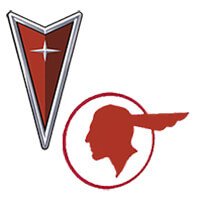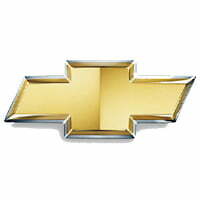Pontiac Brand HomeGeneral Year InformationFull Size Cars Styling changes for full-sized 1966 Pontiacs were subtle ones. New...

Pontiac Brand Home
What will you find on the Brand Home Page?
Search the Pontiac Document Library
Brand Marketing
Includes Print Ads, Press Releases, Sales Brochures, Posters, Cards, Dealer Sheets, and other Artwork.
Factory Documents
Includes Bulletins, Parts Catalogs, Owners Manuals, Stylist Drawings, and other information created by the manufacturer for informational and other purposes.
Features and Articles
Features & Articles from our Magazine Archive as well as materials written and collated by our staff.
Road Tests
A collection of road tests collected from various sources including our Magazine Archive.
Service Manuals
Manuals to assistance in the repair and service of a vehicle. The manuals are accessible if you are a Dues-Paying Members only.
Technical Info & Specifications
Technical Information and Specifications Including AMA Info
Pre World War II Models

Six
1926-1932
1935-1938

Eight
1932 – 1938

Torpedo
1939–1948
Post World War II Models

Chieftain
1949–1958
Star Chief
1954 – 1966
Laurentian - Canada
1955 – 1981
Pathfinder - Canada
1955 – 1958
Safari
1955–1989
Strato-Chief - Canada
1955–1970
Bonneville
1957–2005
Super Chief - Canada
1957–1958
Catalina
1959–1981
Parisienne - Canada
1959–1987
Ventura
1960–1970
Tempest
1961–1970
1987–1991
Grand Prix
1962–1987
Le Mans
1962–1981 US
1971–1983 Canada
Pontiac 2+2
1964-1967
Pontiac GTO
1964–1973
Star Chief Executive - Executive
1966 – 1970
Firebird
1967 – 2002
Trans Am
1969 – 2002
GT-37 & T-37
1970 – 1971
Grand Safari
1971 – 1978
Grand Ville
1971-1975
Ventura II
1971-1974
Ventura GTO
1974
Grand Am
1973–1975
Astre
1973–1977
Sunbird - RWD
1976 -1980
Phoenix - RWD
1977–1979
Grand Am
1978–1980
Phoenix - FWD
1980-1984
T-1000
1981-1987
6000
1982-1991
Sunbird - J2000 - 2000
1982–1988
Parisienne
1983 – 1986
Fiero
1984 – 1988
Grand Am - FWD
1985 – 1991
Grand Prix - FWD
1988–1996
Trans Sport - Montana
1999-2004
Sunbird
1989–1994
Sunfire
1998–2005
Montana SV6
2005-2009
Aztek
2001–2005

Vibe
2003–2010

G6
2004–2010

G3 - G3 Wave
2004–2010

GTO
2004–2006

G5 - G5 Pursuit
2005–2006

Solstice
2006–2009

Torrent
2006–2009

G5
2007–2009

G8
2008–2009
General Brand History
Years Manufactured
1928-2010
World Head Quarters
Detroit Michigan USA
The Tabs Below Have Vehicle Information for Each Specific Year
**Scroll above section to see the models built by year
- Year by Year Information
- 1926-1929
- 1930-1939
- 1940-1942
- 1946-1949
- 1950-1959
- 1960-1969
- 1970-1979
- 1980-1989
- 1990-1999
- 2000-2009
- 2010
These Tabs Have
Historical Information
from Specific Years
Click on the Tabs
to Read More
1926 – The Pontiac 6-27 was introduced as a junior brand to Oakland, featuring a six-cylinder engine.
1927 – New body styles added including a sport roadster and a sports coupe.
1928 – Newly designed bodies were introduced, along with an innovative cross-flow radiator. Gas gauge mounted on the dash.
1929 – New styling introduced, based on the British Vauxhall. Engine enlarged to 200 CID. True convertible introduced.
1930 – Sloping windshield characterized the new car. Hood had 31 vertical louvers. Custom Sedan and Custom Sport Coupe added.
1931 – Pontiac became its own GM division when Oakland was canceled. The I-6 engine continued in production. Full pressure engine lube. Wheelbase increased to 112.0″ from 110.0″.
1932 – Pontiac moves exclusively to 8-cylinder engines with the Pontiac Series 302 CID V8. 1932 cars were re-badged discontinued Oaklands. The wheelbase is now 114.0″.
1933 – Pontiac switched to an I-8 for 1933 used until it was replaced in 1955. Famous “encircled Indian” logo and hood ornament introduced.
1934 – Larger Fisher bodies used with hoods 7.0″ longer to emphasize the I-8. Stock Pontiac hit 93 MPH in the speed trial.
1935 – Pontiac shared the body appearance with the LaSalle and the Cadillac Series 60. Hydraulic brakes were introduced. Six-cylinder offered in “Standard” trim.
1936 – New “waterfall” grille. 8-cylinder wheelbase increased to 116.675″.1937 – All Pontiac models except the new station wagon began using the all-steel “turret top” fully enclosed B-body.
1938 – Minor improvements over the 1937 model. The battery moved under the hood.
1939 – New streamlined body with the lower level six using the Chevrolet A-body. Deluxe six and eight used larger versions of the A-Body.
1940 – Larger and more streamlined bodies featured. Running boards could be deleted. Column gear shift. “Torpedo” nameplate on C-body I-8s.
1941 – All Pontiacs named “Torpedo” beginning this year. Running boards gone. All models called “Deluxe” regardless of trim or engine.
1942 – Fender extension “caps” on front doors made the car look longer. “Streamliner” long wheelbase (C-Body) fastbacks introduced. “Chieftain” upscale nameplate replaced “Deluxe” on Streamliner. Center horn cap on steering wheel.
On February 2, 1942, the last civilian Pontiac automobile was manufactured in the United States, as all automobile factories converted to military production.
NOTE: 1946 – 1948 Pontiacs were reiterations of the 1942 models in terms of both styling and engineering.
1946 – Two body styles offered: “Torpedo” (short wheelbase) or “Streamliner” (122″ wheelbase). Wraparound bumpers and new grille were the major changes from the 1942 offerings.
1947 – New grille of 4 horizontal bars replaced earlier design. Leather shortages resulted in faux upholstery.
1948 – Vertical shafts intersected the the 4 horizontal grille bars this year. Deluxe interiors available on Torpedos and Streamliners. Hydra-matic automatic transmission an available on all models.
1949 – New low and streamlined bodies marked this year. Entry level sixes and eights renamed “Streamliner”. New “Chieftain” nameplate replaced the Streamliner as the upper model range.
1950 – Pontiacs utilized the 1949 bodies with revisions to trim and appointments. The horizontal center grille bar now wrapped around the corners of the body. Streamliners, except wagons, had sloping fastback styling.
1951 – Silver Anniversary Pontiacs reflected “25 years of advanced engineering”. A wing-shaped grille was added, and the “Silver Streak” theme continued. Streamliners used the 8-Body shell once again with sloping fastbacks on coupes.
1952 – The fastback Streamliner line was discontinued, and station wagons joined the A-Body notch back styles in the Chieftain line. Grilles were similar to 1951, but all models had four black, oblong indentations in the upper grille blade.
1953 – Pontiacs were new from bumper to bumper. Changes included one-piece windshields; wraparound rear windows; new hood ornaments; ignition key starting; new grille styling that encircled parking lamps and “Panorama View” instrument panels. Standard models were now “Specials”.
1954 – The Chieftain now represented Pontiac’s least costly line of A-Body models this year. They sat on a 122″ wheelbase and had styling changes common to all Pontiacs. A new Star Chief line was created by adding an 11-inch frame extension in the rear of the GM A-Body platform and fitting longer rear sheetmetal.
1955 – New bodies and chassis were introduced. A new massive, divided bumper/grille; revised body moldings; split “Silver Streak” bands; twin streaks atop rear fenders and wraparound windshields. The Custom Safari wagon with two-door hardtop styling also bowed. Biggest news was the new 287 CID OHV V-8.
1956 – All models had reversed vertically slanting slash accent moldings and ‘Sweepspear’ body rub trim. The two-door Custom Safari was a Star Chief on the Chieftain chassis, with the base four-barrel Star Chief engine standard. The V-8 was now 317 CID. A two 4-barrel 285 HP version was released.
1957 – New “Star Flight” styling was featured. A unique, limited-edition Custom Bonneville Convertible was released. Production of the Bonneville was limited to 630 plus 2 prototypes, the prorotypes had four bucket seats. A fuel-injected 347 CID 317 HP V-8 was standard.
1958 – Pontiacs featured all new styling and chassis engineering. New honeycomb grilles, a longer, lower silhouette, quad headlamps/tail lamps, recessed floors and concave rear fender panels. Bonneville now offered a convertible and sport coupe. “Tri-Power” carburetion setup used three 2-barrel Rochester carburetors and gave 300 HP.
1959 – A major restyle occurred. 1959 Pontiacs included lower, longer bodies with more interior room; new twin grille theme; twin-fin rear fenders; ‘V’ contour hoods; increased glass area and flat, rear over-hanging roofs on four-door “Vista” hardtops. V-8s moved to 389 CID and max HP with Tri-Power was 330.
1960 – Major styling changes for 1960 included undivided horizontal bar grilles, straight full-length side trim moldings and a new deck lid which was nearly flush with the tops of the fenders. Horsepower for the Tri-Power NASCAR Tempest 425 block was 348.
1961 – Downsizing was seen at Pontiac this year with full size cars smaller and lighter in weight. A radically new compact named “Tempest” was introduced. The Tempest used a unique 1/2 Pontiac V-8 as its standard engine.
1962 – Full size Pontiacs grew about 1.5″ for 1962. Styling revisions included a V-shaped twin grille, full-length side sculpturing and new rear styling with curved tail lamps. Ventura trim became an add-on package for two Catalinas. Styling changes for Tempests were minimal. There were five basic models, but two were called Customs and could be optioned with the LeMans trim package.
1963 – In 1963 GM banned factory competition efforts. Styling for the full-size car was totally new with clean, square lines. angled roofs, upward curving taillamps, and recessed split grilles. The 1963 Tempests had the same wheelbase and technical features of previous years, but were two inches wider and five inches longer.
1964 – Full sized Pontiacs were styled to look shorter, but were about an inch longer overall. The 2+2 replaced the Grand Prix as the full size performance model. Tempests were enlarged again and had separate frame construction with conventional drive train engineering. This mid-sized platform begat the world changing GTO – full size engine in smaller, lighter body.
1965 – Full-sized 1965 Pontiacs had twin air-slot grilles; vertically stacked barrel-shaped headlamps shrouded by cut-back front fenders. They had V-shaped hoods with a prominent center bu!ge and curved side glass. Tempest design refinements for 1965 included vertically stacked headlamps, larger wheel openings, crisper side body sculpturing and more deeply recessed grilles. Engine offering for both lines mirrored 1964, though the 421 CID now reached 376 HP.
1966 – The full size Pontiac received new plastic grilles and headlamp extension caps that gave a more integrated frontal appearance. The Catalina 2+2 models became a separate series. For Tempest, the big news was under the hood, where an overhead camshaft six-cylinder engine was now fitted. The body was again changed, with subtle “Coke Bottle” styling. The GTO was now a separate series from the LeMans.
1967 – Full sized Pontiacs now had integral bumper-grilles, “wasp waist” body styling, angular wedge-shaped front fender tips and recessed windshield wipers. The Grand Prix had distinct styling touches and a new convertible body. All Tempests were mildly facelifted with grille and rear panel treatments varying by series. GTO featured a new grille and other updates. The Firebird was released in January.
1968 – New styling for full-sized 1968 Pontiacs included peripheral front bumpers, pointed noses, split grilles, new interiors, revised instrument panels and redesigned taillamps. Tempests now had long hood/short deck styling. GTOs had hidden headlights and steel reinforced “Endura” rubber front bumpers.
1969 – New styling features for full-sized 1969 Pontiacs included split bumpers, revised rooflines and ventless windows. An all-new Grand Prix on an exclusive 118-inch wheelbase was introduced. Tempests were mildly facelifted with new grille and taillight treamtments. The GTO “Judge” option was released in December 1968. Firebirds were restyled with flatter wheel openings, front fender windsplits, new rooflines and a new grille. The Trans Am was introduced in March 1969.
1970 – The fullsize Pontiacs has radiator grilles inspired by the Grand Prix, taillights set into bumpers, hoods with wider and flatter center bulges, hidden radio antennas and wrapover front fender tips. The Grand Prix featured a minimum of styling changes – taillamp revisions and recessed door handles being notable. Tempests had a new Firebird-look bumper grille, wraparound front parking and taillights, crease-sculptured side styling and body color nose panels. GTO received a new front fascia. Firebird received a striking new body.
1971 – Full-size Pontiacs had all-new styling with “fuselage” bodies and a more massive V-shaped split radiator grille. Dual headlamps were set high into the hood line with horizontal grilles below. Bonnevilles were no longer top line Pontiacs with the new Grand Ville series at the top of the line. The Grand Prix had single headlamps, a bumper running across the grille and a semi-boattail rear end. Revisions to Pontiac intermediates included new model names, new series designations, redesigned grilles and a reworked GTO nose and hood. 1971 Firebird changes were minor. The Ventura II line was introduced as an addition to the Pontiac line. It was based on the compact-sized Chevy II Nova with unique styling.
1972 – New energy absorbing bumpers, redesigned radiator styled grilles and revised taillamp treatments characterized full-sized Pontiacs. Grand Prix and Tempest were little changed. The GTO was no longer a separate series – a Code 334 GTO option package was available for the LeMans hardtop coupe and the LeMans Sport convertible. The possibility of dropping the Firebird was raised so styling changes were minimal. There were hardly any changes in the 1972 Ventura II line.
1973 – Full-size Pontiac front end styling used full-width grilles having thin horizontal blades. The Grand Prix retained a styling link to previous car, though it now rode on the full-size chassis. The intermediate line was completely restyled. V-shaped hoods, split rectangular grilles, single headlamps mounted in square housings, highly sculptured fenders and ‘Colonnade’ style rooflines were featured. The Pontiac Grand Am – an A-Body intermediate with an international flavor was introduced this year. LeMans and LeMans Sport sport coupes were available with the GTO option. Firebirds had a new Endura nose substantially improved to meet crash standards. The Ventura II name was shortened to Ventura and cars had minor styling updates.
1974 – The front and rear of the full size cars were restyled and some body styles had new rooflines. Grand Prix had a shorter grille and twin vertical taillights. LeMans models had new front bumpers with rubber-faced guards, twin rectangular grilles accented by bright horizontal division bars and new rear bumpers. Grand Am was unchanged. Firebird now had a shovel-nosed Endura front end, and a horizontal slotted taillamp treatment. The Firebird style grille seen on 1973 Ventura Sprints was used on all models in this line. The GTO package was now an option for Ventura coupes.
1975 – Full-sized Pontiacs were redesigned for 1975 with most models featuring new roofline treatments All had a distinctive radiator style grille with a wide vertical center divider. Grand Prix had grille and tail light redesigns. The 1975 LeMans series were unchanged from the previous year except for a new grille insert and small trim variations. The Grand AM was virtually unchanged. The Luxury LeMans became the Grand LeMans. Firebirds continued were much the same as in 1974 except for a new roofline with a wraparound backlight. Venturas were completely restyled and featured distinctive grille ports with integral parking lights and an energy-absorbing front bumper. Pontiac’s entry in the 1975 sub-compact field was named Astre.
1976 – A new Sunbird subcompact entered the lineup. Astre was little changed. Ventura came in three body styles: two-door coupe or hatchback, and four-door sedan. Firbird had body-colored urethane bumpers at both ends this year. Quad rectangular headlamps was the most noteable change to LeMans. Pontiac’s Grand Prix had sharp hood creases that came to a point at the front, and a new wrapoverfin grille. Catalina and Bonneville shared a similar front-end look. Many models had smaller engines than before, including a 260 CID V-8 under LeMans hoods and a 350 for the new Grand Prix.
1977 – A switch from the old I-6 to V-6 powerplants as base engines occurred, as well as downsizing of full-size cars. The 455 CID V-8 was dropped. The Can Am Limited Edition LeMans was introduced. Astre had a new grill as did Sunbird – featuring quad headlights. Ventura had a new grille, as well as the Grand Prix-style dash. New front-end styling for the Firebird featured quad rectangular headlamps and a sleek grille. LeMans had a new front end fascia and revised engine selections. For Grand Prix, the grille was no longer a wrapover style: only five vertical sections of bold elements on each side of the divider. Though reduced in outside dimensions and weight, both Catalina and Bonneville offered more head and rear leg room.
1978 – Both Astre and Ventura faded away. Following the downsizing of full-size models for 1977, the mid-size LeMans, Grand LeMans and personal-luxury Grand Prix received similar treatment this year. Returning this season was the Grand Am nameplate. Ventura was gone, but the compact Phoenix came in two-door coupe, four-door sedan, and hatchback coupe form. Firebird was largely unchanged as were the full-size models. The downsized mid-size Pontiacs were 8-17 inches shorter and 530 to 925 pounds lighter than before. Three Grand Prix models were offered this year: base, sporty SJ, and luxury LJ all on the new wheelbase.
1979 – Firebird received a dramatically different look. Wire wheels became optional on Grand Prix. Formula and Trans Am Firebirds could get tour-wheel power disc brakes. Minor styling changes were noted for Sunbird and Phoenix, LeMans and full-size cars. Front ends of the new Firebirds were far different from predecessors. Quad rectangular headlamps now stood in separate recessed housings, in a sharply sloped center panel that had a peak and an emblem-but no grille. Instead, horizontally ribbed lower grilles went into twin slots below the bumper area.
1981 – 1981 saw few changes in the brand. For Grand Prix, a minor reskinning of the sheet metal for improved aerodynamics and a new grille design and revised tail section. The SJ model was dropped and a new Brougham series was now the flagship. The hood decal for the 1981 model year Firebird was restyled
1982 – Introduced in 1982, the wedge-shaped Firebird was the first major redesign of the pony car since 1970. For the first time, Firebird offered a four-cylinder engine.
1983 – Few Changes in the brand. Grand Prix ended the LJ series.
1984 – The Fiero was introduced – a two-seat, mid-engined coupe, a major departure from anything Pontiac had produced in the past. A. The Fiero was partially responsible for Pontiac seeing its first sales increase in four years. A Special Touring Edition (STE) was added to the 6000 line as a competitor to European road cars such as the Mercedes 190. Grand Prix replaced the LJ with a new LE model.
1985 – Full-size buyers, disappointed by the lack of an available big Bonneville, complained, resulting in Pontiac’s importing the Canadian market Pontiac Parisienne, which featured the Bonneville’s deluxe trim. The Diesel v-8 was dropped.
1986 – This would be the last year of the G-Body RWD Bonneville. with the Grand Prix, a new 2+2 model was offered for homologation of an aerodynamic coupe body for NASCAR competition, like Chevrolet’s 1986 Monte Carlo SS Aerocoupe.
1987 – The 1987 model year was the last GP to feature rear-wheel-drive, V8 engines (until late-2005), and separate body-on-frame construction. The new FWD Bonneville was placed on Car & Driver’s “10 Best” list for 1987, offering both a base model and LE model. The 2+2 Grand Prix was discontinued.
1988 – In 1988 all Pontiacs, with the exception of the Firebird, switched to front-wheel drive platforms. Bonneville now had a revised version of the V-6, with an increase of 10 hp. The first front-wheel drive W-body Grand Prix coupes were released for the 1988 model year. Pontiac also introduced a rare option for the Trans Am GTA, the $800 “notchback”, which replaced the standard long large, glass-dominated hatchback.
1989 – For 1989, a compact disc player became optional equipment. Changes for the grand Prix included time optional anti-lock brakes, and air conditioning was standard as were rear shoulder belts. The Firebird notchback was canceled for the 1989 model year.
In February 1969, F. James McDonald became Pontiac general manager. He replaced Delorean who moved to Chevrolet in the same capacity. The division’s new 300,000 square foot, ultra-modern administration building opened early the next year. This was a critical stage for car development programs, due to pressures from the government and insurance companies alike. High-performance was continually de-emphasized in favor of safety and fuel economy gains combined with engine emissions reductions
During the 1971 calendar year, Pontiac captured third place in U.S. auto sales for the 10th time in 11 years, but the division’s image was losing impact at the same time. The low-priced Ventura II compact hit the market, a new, less powerful 1972 Trans Am appeared, and the nearest thing to a full-sized performance car available was the luxurious Bonneville with a massive 455 CID V-8
On Oct 1, 1972, Martin J Casano became general manager of Pontiac Motor Division. Under him, a new regular fuel Super-Duty V-8 evolved and became an instant collector’s item when ultimately released in late 1973 Trans Ams and Formula Firebirds. Under Casano the GTO disappeared and the Firebird came close to meeting a similar fate.
The 1976 large car models were the last of the traditional American cars powered by big-block V8 engines. After this year, all GM models would go through “downsizing” and shrink in length, width, weight, and available engine size. The 1976 Sunbird, based on the Chevrolet Vega and Monza equivalents, joined the line.The Sunbird was offered in its rear-wheel-drive configuration through the 1980 model year.
In 1977, Pontiac introduced the Phoenix, which replaced the Ventura entirely after the 1977 model year. Pontiac introduced its 151 cubic inch “Iron Duke” 4-cylinder overhead valve engine. It was first used in the 1977 Astre, replacing Astre’s aluminum-block 140 cubic inch Vega engine. The I-4 and the 301 CID V-8 were the last engines designed Pontiac. Also, in 1977, the full-sized Pontiacs received “downsizing”.
The first was the Phoenix, in 1980, Then the mid-size “6000” and small Sunbird in 1982, the Fiero in 1984, the Grand Am in 1985 and the Grand Prix in 1988, ending the G-Body platform.
The large size re-platformed Bonneville that had been introduced in 1977 remained until 1981 where it then was moved to the G-Body. In 1987, it moved to the new FWD platform.
Search Our Pontiac Brand Information
1965 Pontiac Models Described in Detail
Pontiac Brand HomeGeneral Year InformationFull Size Cars Styling changes for full-sized 1965 Pontiacs included larger...
1964 Pontiac Models Described in Detail
Pontiac Brand HomeGeneral Year InformationFull Size Cars Full sized Pontiacs were facelifted for 1964. They looked shorter,...
1963 Pontiac Models Described in Detail
Pontiac Brand Home General Year Information Full Size Cars Styling and luxury were emphasized by Pontiac in 1963 as GM had...
Acquisitions, Partnerships, and Mergers
GM/Toyota Vehicles Created as a Result of NUMMI,
The Pontiac Vibe is a compact car that was sold by Pontiac from 2002 to 2010. It was jointly developed by General Motors along with Toyota, who manufactures the mechanically similar Toyota Matrix. Manufactured by the Toyota-GM joint venture NUMMI in Fremont, California, the Vibe succeeded the Chevrolet Prizm in production at NUMMI and like the Prizm, it was derived from the Toyota Corolla, making it the last of the GM and Toyota developed S-body cars. Check out more info at Motor Trend or on wikipedia
Help us build this section by submitting your Reference Here
Cultural References
The Frech Connection – 1971 Pontiac LeMans
Look for the brown 1971 Pontiac LeMans sedan, in this New York Cop Drama. Watch the famous car chase on YouTube Here.
Help us build this section by submitting your Reference Here
Search the Complete Pontiac Library
Brand Marketing
Includes Print Ads, Press Releases, Sales Brochures, Posters, Cards, Dealer Sheets, and other Artwork.
Factory Documents
Includes Bulletins, Parts Catalogs, Owners Manuals, Stylist Drawings, and other information created by the manufacturer for informational and other purposes.
Features and Articles
Features & Articles from our Magazine Archive as well as materials written and collated by our staff.
Road Tests
A collection of road tests collected from various sources including our Magazine Archive.
Service Manuals
Manuals to assistance in the repair and service of a vehicle. The manuals are accessible if you are a Dues-Paying Members only.
Technical Info & Specifications
Technical Information and Specifications Including AMA Info

























































